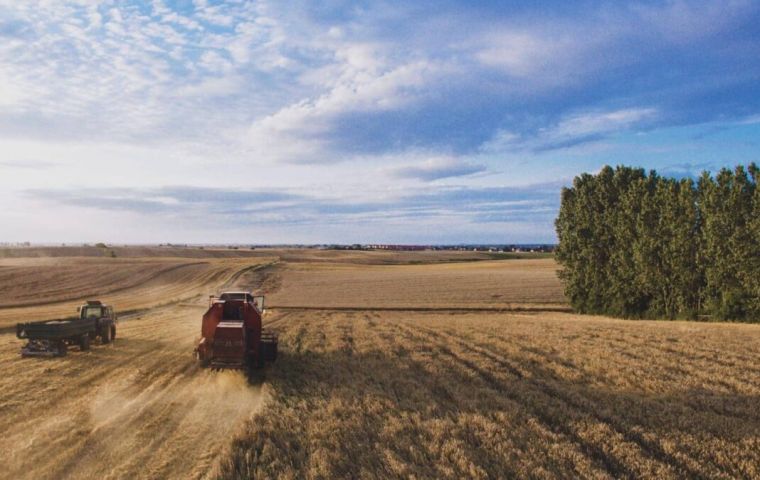MercoPress. South Atlantic News Agency
Improved weather and soil moisture could mean an extraordinary crop year for Argentina
 “Cool weather and significant rainfall in November have proven pivotal, especially in the Buenos Aires Province, Argentina’s largest wheat-producing region,” BCR said
“Cool weather and significant rainfall in November have proven pivotal, especially in the Buenos Aires Province, Argentina’s largest wheat-producing region,” BCR said The Rosario Board of Trade (BCR) announced that the Argentine 2024/25 wheat crop is estimated to reach 19.3 million tons, up from the previous 18.8 million tons, and this is attributed to higher-than-expected yields, bolstered by favorable weather conditions in November, as highlighted in its monthly grain report released this week.
“Cool weather and significant rainfall in November have proven pivotal, especially in the Buenos Aires Province, Argentina’s largest wheat-producing region,” the BCR noted. With this revision, the current wheat campaign is poised to be the third most productive of the last 15 cycles, trailing only the record-breaking 2021/22 season (23 million ton) and the 2019/20 harvest (19.5 million tons).
Farmers have already harvested 58% of the wheat-planted area, with the season ending in January, according to the BCR. Meanwhile, favorable rainfall in recent weeks has also improved conditions for soybean and corn crops, currently in their planting stages. As of now, 62% of the soybean area and 64% of the corn area have been planted. The BCR forecasts soybean production at 53–53.5 million tons and corn output at 50–51 million tons for the 2024/25 season.
Argentina’s corn harvest is also expected to deliver encouraging results. LSEG (London Stock Exchange Group) reported on Wednesday that corn production for 2024/25 is projected at 48.2 million tons, a 1% increase from previous estimates. Improved soil moisture and the swift pace of planting contributed to this upward revision.
“Despite regional discrepancies in soil moisture, overall conditions across much of the key Pampas growing regions have significantly improved compared to the start of the season, thanks to better-than-expected November weather patterns,” the report stated.
Data from Argentina’s Ministry of Agriculture indicates that 60% of the corn planting has been completed nationwide, ahead of last year’s 54% and the five-year average of 53%. However, LSEG warned that long-term yield prospects remain uncertain despite recent rainfall and improved soil moisture levels.
“Heat and drought conditions are expected from December through February, coinciding with the crop’s critical growth phase,” the report added.




Top Comments
Disclaimer & comment rulesCommenting for this story is now closed.
If you have a Facebook account, become a fan and comment on our Facebook Page!